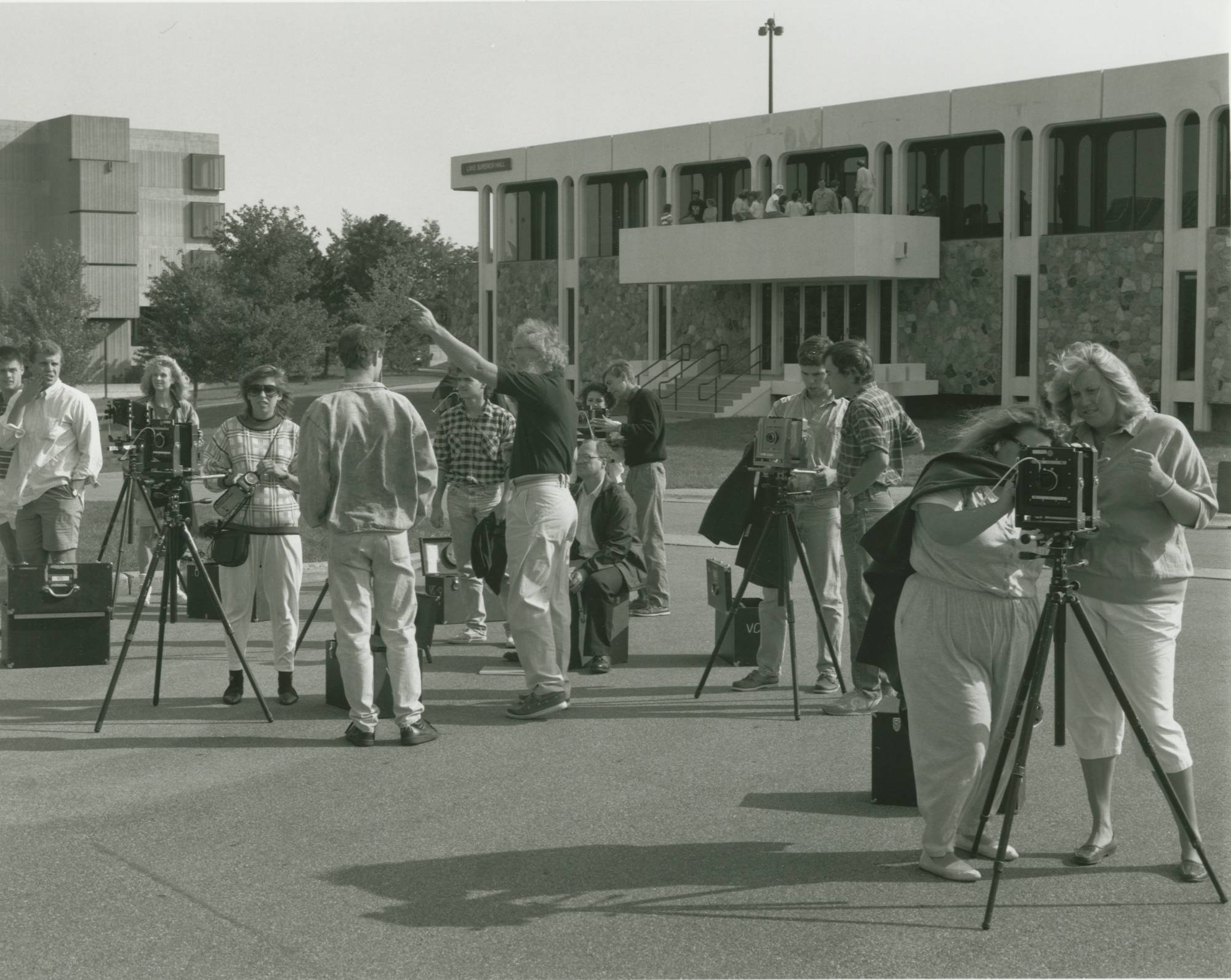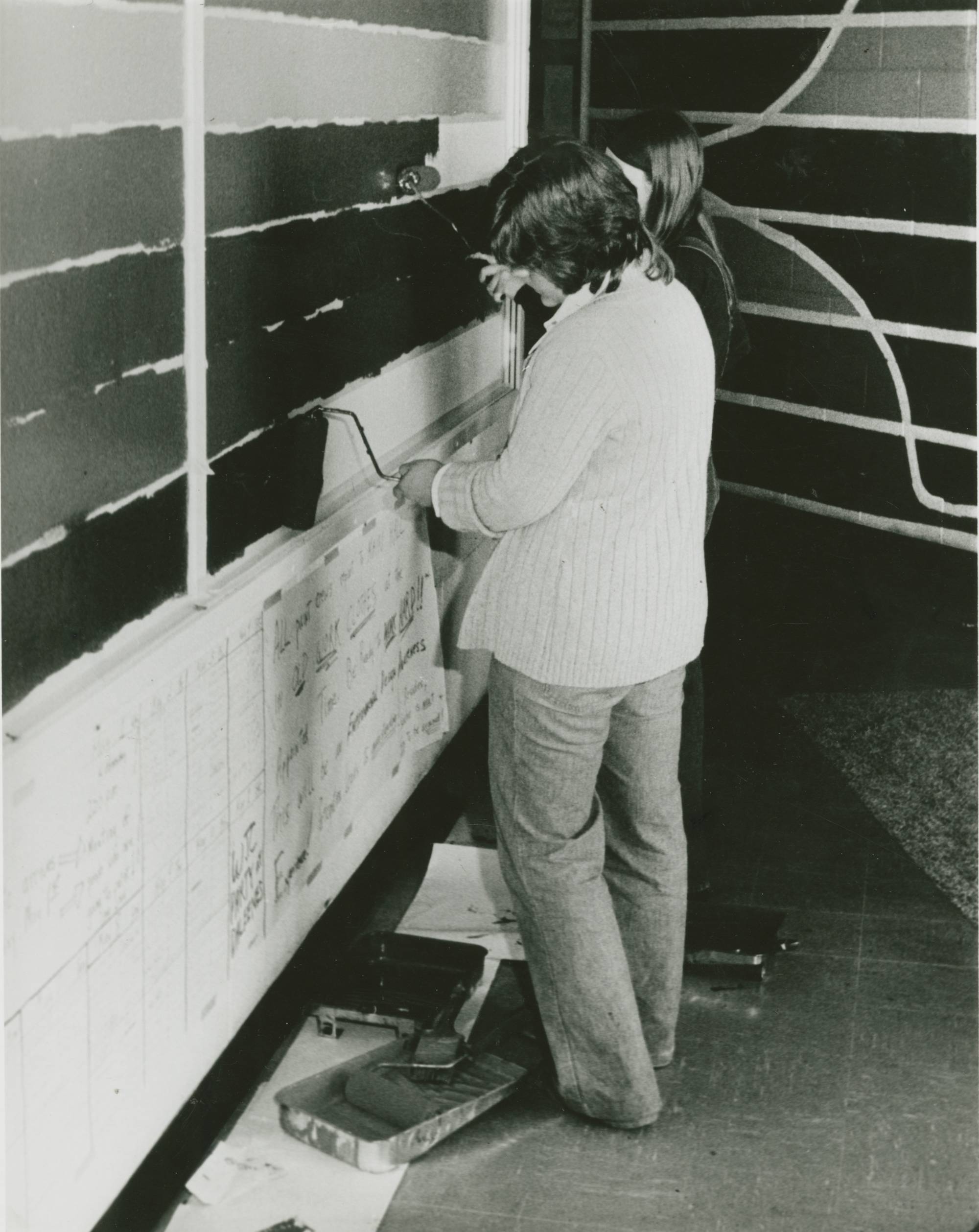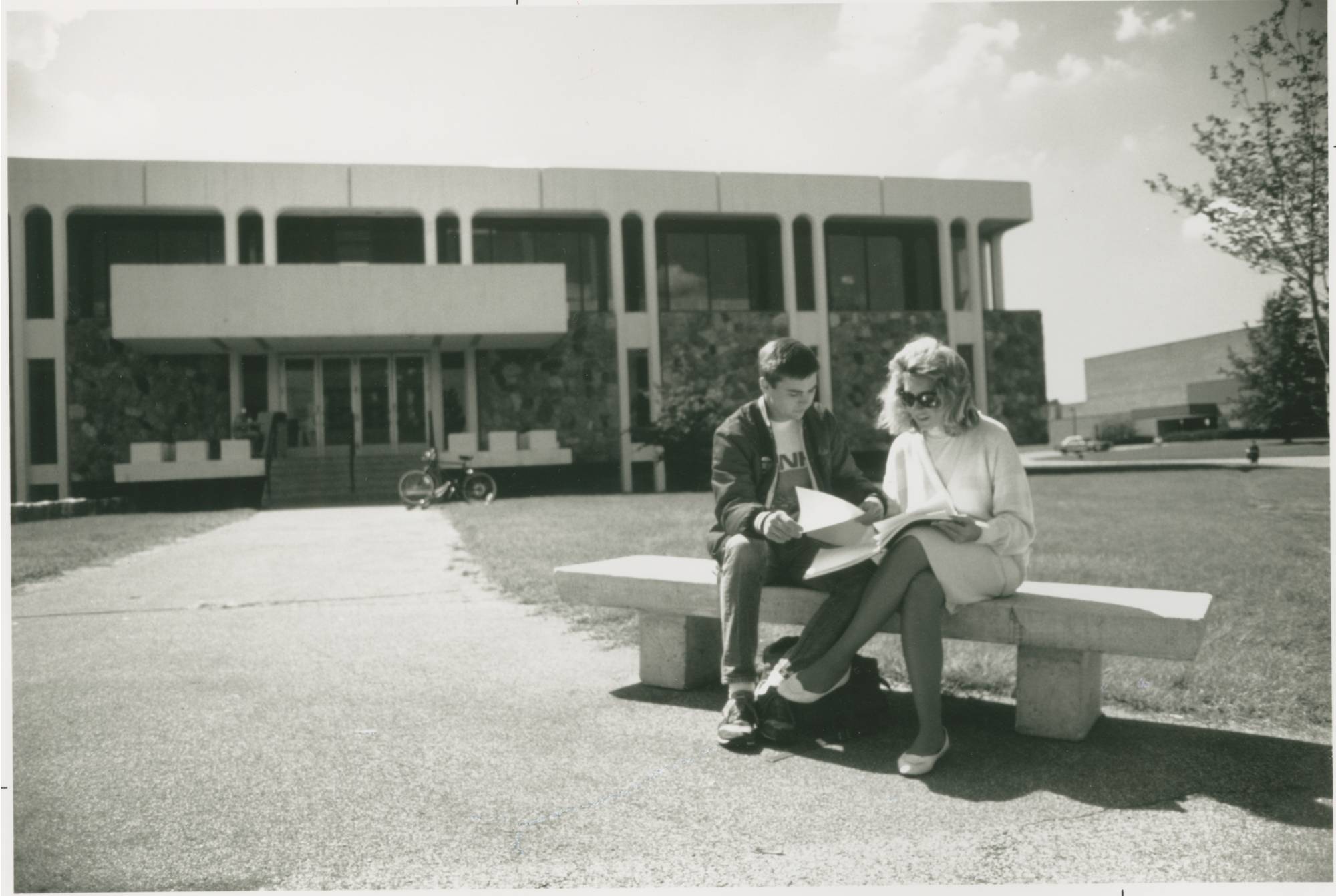History

A Photography Class Meeting outside of Lake Superior Hall in the 1990s.

A student painting a mural in Lake Superior Hall in the 80s that is still in the building today.
[1570645841].jpg)
Students, faculty, and a dog in front of the William James mural in Lake Superior Hall.

A couple sitting on a bench in front of Lake Superior Hall in the 80s.
Mission
Through the integration of liberal and professional education, the School of Communications educates students to possess essential communication skills and to be critical, self-reflective communication professionals and contributing members of society.
Vision
The School of Communications will be known for its rigorous programs, culture of inquiry and achievement, innovative pedagogical practices, and graduates who are leaders in their chosen fields. The SoC will enhance educational quality by:
- Attracting and retaining diverse, exceptional, and highly qualified faculty, staff, and students.
- Increasing interdisciplinary collaboration in students' work, as well as between faculty in SoC majors and with other units in the university.
- Infusing the curriculum and unit activities with international and intercultural perspectives.
- Engaging current and emerging communication technologies and enhancing students' critical competence in their use.
- Providing state-of-the-art facilities to help prepare students for practice in rapidly changing communications fields.
Values
Integration
The SoC is founded upon a principle of the integration of liberal and professional education, and of theory and practice. The SoC prepares graduates to be intellectually aware and professionally prepared.
Involvement
The SoC values maintaining a strong presence in the General Education program in order to provide a strong communications skill set to all GVSU students.
Interdisciplinarity
Communications is a multidisciplinary and interdisciplinary field of inquiry and professional practice.
Individualized Instruction
SoC faculty recognize that personal instruction and interaction, individual attention to each student, and smaller class sizes are essential for effective learning.
Objectives
1.A.1 At least 90% of students in School of Communications majors participate in two or more high-impact learning experiences or significant cocurricular activities, prior to graduation, in addition to supplemental writing skills and capstone courses.
1.A.2 The School of Communications regularly assesses the effectiveness of academic advising within the School and takes steps to improve students’ access to effective advising resources while achieving manageable and equitable advising loads for all faculty.
1.A.3 The School of Communications organizes regular co-curricular events that encourage students to explore career opportunities and other issues relevant to their fields of study.
1.B.1 Students in the School of Communications engage international and intercultural perspectives throughout each major’s curriculum.
1.C.2 School of Communications faculty forge collaborations within and beyond GVSU to enhance student learning and professional growth.
1.D.2 Students in each SoC major engage in the critical study and/or use of technology relevant to their field.
2.A.2 The number of student credit hours taught by tenure-track faculty increases to meet the CLAS average.
2.B.1 The School of Communications actively recruits diverse students and faculty by establishing relationships with institutions and organizations that serve significant numbers of individuals from historically underrepresented groups.
2.E.1 The School of Communications allocates substantial resources (above and beyond normal professional development funds) to support faculty scholarship and creative activity.
3.D.2 The School of Communications contributes to GVSU’s General Education program through the development of course offerings in each SoC discipline.
4.A.3 The School of Communications actively recruits students, both to SoC programs and to GVSU.

